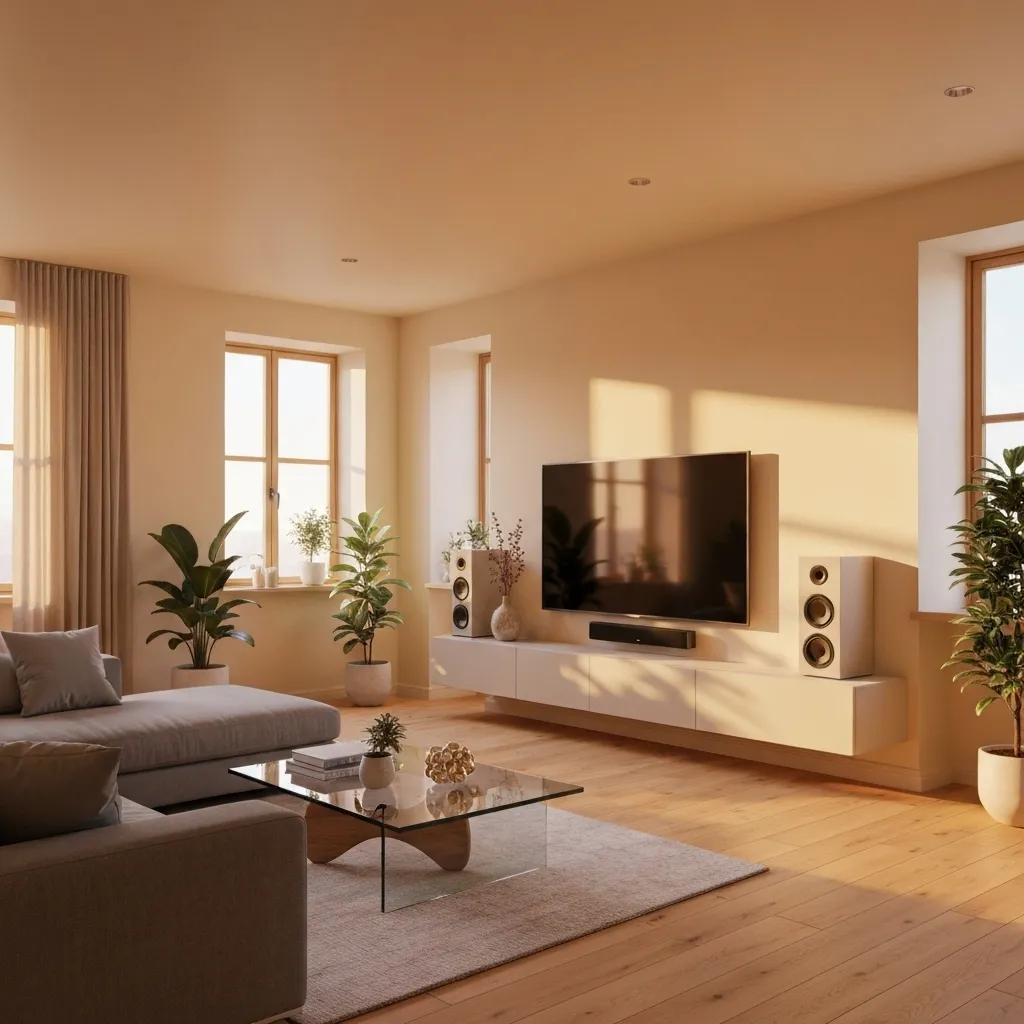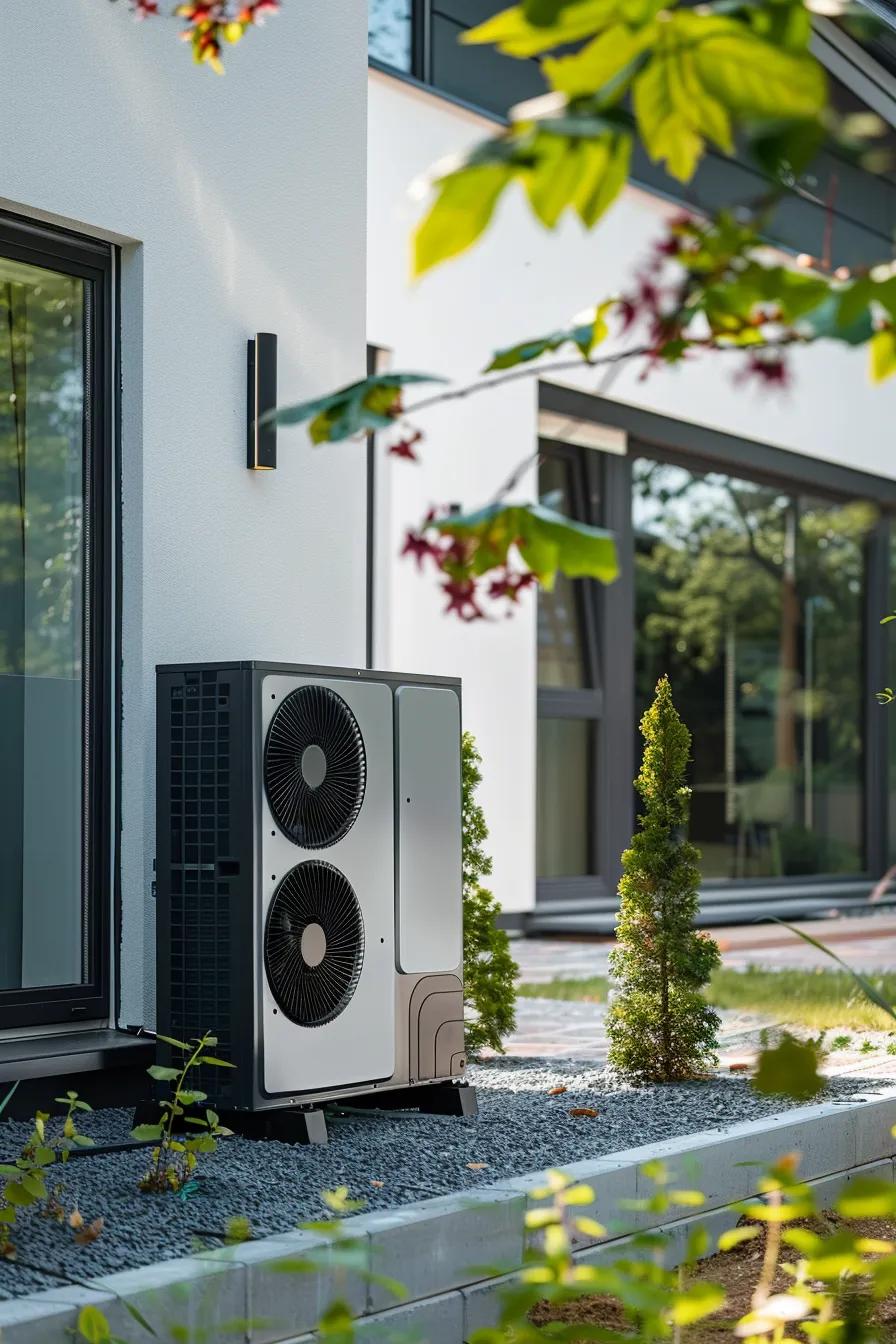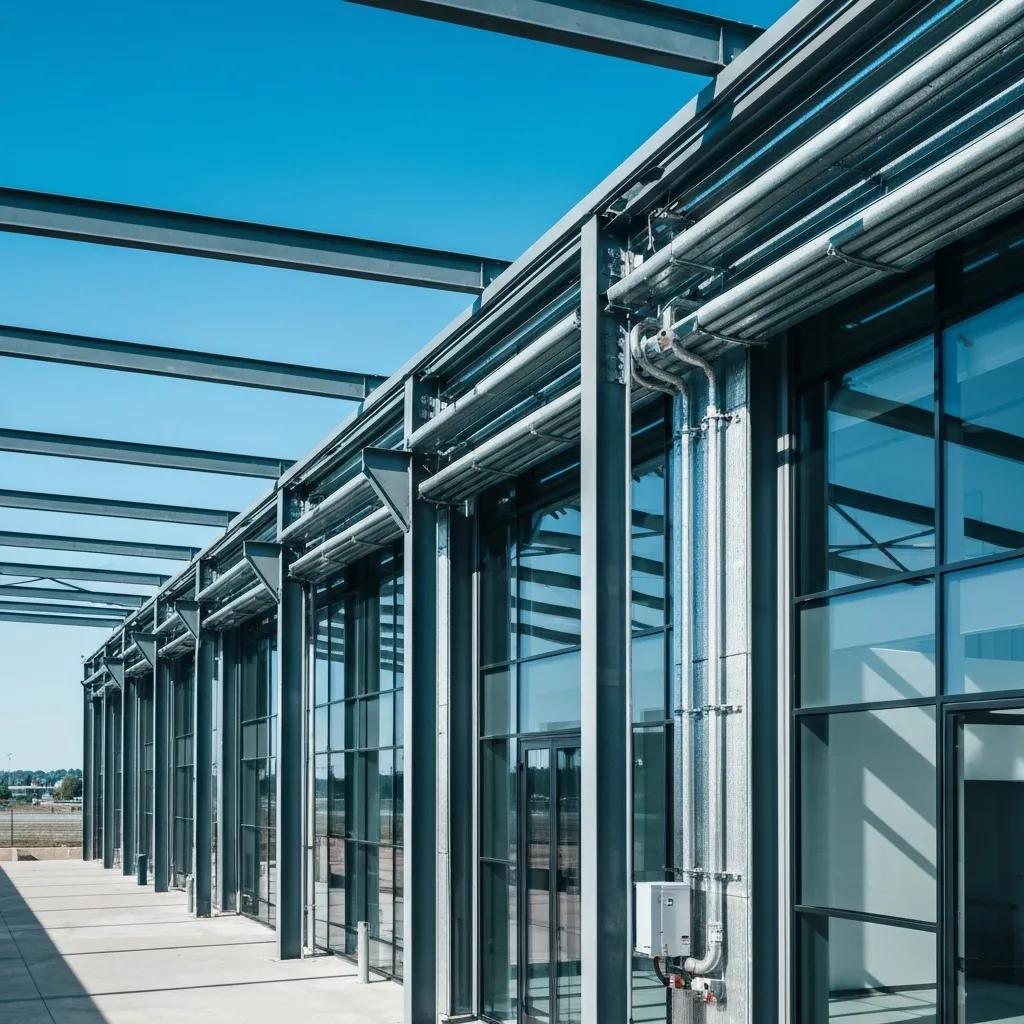Your Ultimate Guide to Heat Pump Radiators: Installation, Sizing, Efficiency, and Grants
Are your current radiators struggling to keep your home toasty as energy bills climb? Discover how choosing and fitting the right heat pumps can revolutionise your home heating, making it a dependable, eco-friendly system. This guide is packed with expert advice on what heat pump radiators are, the best materials and sizes for lower temperatures, straightforward installation tips, cost breakdowns, grant opportunities, and essential maintenance to keep them running smoothly for years. Whether you’re updating your existing radiators or planning a new setup, you’ll find practical tips to slash energy use and access valuable government schemes.
We’ll start by explaining how heat pump radiators work and bust some common myths. Then, we’ll compare radiator types that excel with 35–55 °C flow, guide you through precise sizing methods, cover installation and integration with underfloor heating, detail financial incentives, and wrap up with maintenance strategies for peak efficiency. Throughout, Neater Heat’s local expertise in Hampshire, Surrey, Berkshire, and Greater London is here to support you with professional assessments and heating system care plans.
What Exactly Are Heat Pump Radiators and How Do They Operate?
Heat pump radiators are specifically designed low-temperature emitters, engineered to deliver ample heat output even when the water temperature is between 35 °C and 55 °C. They connect to your air source or ground source heat pump via a closed-loop water system, harnessing renewable energy. Understanding how these differ from radiators powered by traditional boilers is key to selecting the right products for maximum efficiency.
How Do Heat Pumps Distribute Heat to Your Radiators?
A heat pump captures warmth from the surrounding air or ground and boosts its temperature using a refrigeration cycle. The heated refrigerant then passes through a heat exchanger, transferring its energy to the system’s water. This warmed water circulates through your radiators, releasing heat into your rooms. This continuous thermal exchange keeps your home comfortable while using minimal electricity, paving the way for our discussion on heat pumps.
What Sets Heat Pump Radiators Apart from Conventional Ones?
Traditional radiators typically require high flow temperatures (60–75 °C) and have smaller surface areas. In contrast, heat pump radiators are characterised by:
- Generous surface areas to effectively compensate for lower temperatures
- High-thermal conductivity materials for rapid heat transfer
- Reduced water content to minimise the energy needed for circulation
These design features ensure you get comparable heat output under gentler operating conditions, leading us nicely into the benefits of energy efficiency.
What Are the Energy Efficiency Advantages of Heat Pump Radiators?
Heat pump radiators boost efficiency by perfectly matching the emitter’s design to the heat source’s lower flow temperature. They:
- Improve the COP (Coefficient of Performance) by reducing the temperature difference the heat pump needs to overcome
- Minimise heat loss from the distribution pipework
- Lower the electricity used to circulate water
By selecting the right emitters, you can enhance your system’s overall annual efficiency by up to 20 %, directly cutting your carbon footprint and heating bills—a point we’ll revisit when we discuss sizing.
The Efficiency of Heat Pump Systems – Explained
Research shows that heat pump systems paired with optimised radiators can achieve impressive efficiencies, often boasting a Coefficient of Performance (COP) exceeding 3.0. This translates into substantial savings on energy consumption and lower running costs compared to conventional heating methods.
International Journal of Energy Research (2022)
What Common Misunderstandings Surround Heat Pump Radiators?
Many homeowners mistakenly believe that heat pumps necessitate “huge” radiators or that their existing steel radiators won’t be up to the task. In reality, upgrading to aluminium convectors or adding parallel circuits can often provide sufficient heat output without needing excessively large units. Clearing up these myths helps clarify the feasibility of retrofitting and guides you towards the most suitable radiator types.
Which Radiator Types Are Best Suited for Heat Pumps?
Choosing the right radiator material and design is absolutely crucial for effective low-temperature performance. Here’s a comparison of popular options and how well they work with heat pump systems.
| Radiator Type | Thermal Conductivity | Low-Flow Output | Aesthetic Versatility |
|---|---|---|---|
| Aluminium Convector | High | Excellent | Standard and designer styles |
| Low-Water Steel | Moderate | Good | Panel or column designs |
| Vertical Designer | High | Very Good | Space-saving, stylish options |
| Designer Column | Moderate | Good | Customisable finishes |
As you can see, aluminium radiators excel in conductivity and output at 35–55 °C. Let’s delve into why aluminium is such an ideal choice.
Why Are Aluminium Radiators Perfect for Heat Pump Systems?
Aluminium’s rapid heat transfer capabilities and low water volume offer significant advantages:
- Reduces pump energy consumption by up to 30 %
- Quickly reaches desired room temperatures for responsive heating
- Can be constructed using recycled materials, lowering their environmental impact
Material Properties and Heat Transfer in Radiators – Insights
Studies confirm that the material used for radiators profoundly impacts heat transfer efficiency. Aluminium, thanks to its excellent thermal conductivity and minimal water content, can significantly enhance the responsiveness and overall performance of heat pump heating systems.
Journal of Building Engineering (2023)
These benefits make aluminium a top contender for renewable heating systems, naturally leading us to compare it with steel and other materials.
How Do Low-Temperature Steel Radiators Stack Up Against Other Options for Heat Pumps?
Low-water steel radiators can perform adequately at moderate flow temperatures, but they:
- Require larger panel sizes to achieve the same heat output
- Take longer to heat up, impacting responsiveness
- Contain more water, increasing the energy needed for circulation
While still a viable option, steel radiators often need to be 1.5 to 2 times larger than their aluminium counterparts to deliver equivalent heat. This sizing principle is absolutely critical for effective system design.
What Are the Benefits of Vertical and Designer Radiators for Heat Pumps?
Vertical and designer radiators blend style with practicality by:
- Maximising heat output by using vertical space, saving valuable floor area
- Offering custom finishes to perfectly match contemporary interiors
- Maintaining efficient heat delivery when correctly sized for the space
These space-saving solutions integrate beautifully into both existing homes and new builds, smoothly transitioning us to the topic of radiator sizing.
How Does the Choice of Radiator Material Influence Heat Pump Efficiency?
The material selected for your radiators affects heat pump efficiency through three key factors:
- Conductivity – Faster heat transfer directly boosts the system’s COP
- Water Content – Less water means reduced circulation energy losses
- Responsiveness – Quicker heating and cooling improves temperature control
Striking the right balance between these properties is essential for optimal performance and underpins accurate sizing calculations.
How Should Heat Pump Radiators Be Sized for Peak Performance?
Getting the sizing right is essential to compensate for lower flow temperatures and maximise energy savings by ensuring your radiators can meet the room’s heat loss requirements.
Why Do Heat Pump Radiators Typically Need to Be Larger Than Standard Ones?
Heat pumps deliver water at temperatures around 35–55 °C, significantly lower than the 60–75 °C from traditional boilers. To compensate for this lower ΔT (temperature differential), radiators need a larger surface area – typically 1.5 to 2.5 times greater – to deliver the same amount of heat to the room. This sizing logic leads us to the heating system methods used by professionals.
How Is Radiator Sizing Calculated for Heat Pump Systems?
A thorough sizing process involves several key steps:
- Conducting a detailed heat loss survey for each room
- Establishing the target flow and return water temperatures
- Selecting radiator models that can provide the required kW output at those specific temperatures
- Adding a safety margin (usually around 10 %) to account for factors like external walls
Implementing these steps ensures that every radiator meets the design specifications, which in turn informs the ideal flow temperature selection.
What Is the Ideal Flow Temperature for Heat Pump Radiators?
The optimal design flow temperatures generally fall between 45 °C and 55 °C. This range is chosen to:
- Maximise the COP, often achieving figures above 3.0
- Prevent condensation on surfaces in well-insulated homes
- Comply with current regulations that cap flow temperatures at 55 °C for all heating systems
Adhering to these parameters ensures a perfect balance of comfort and efficiency.
How Can a Professional Assessment Enhance Radiator Sizing Accuracy?
Engaging a certified installer guarantees:
- A precise analysis of your home’s insulation and fabric
- Accurate thermodynamic calculations for your specific property
- Tailored radiator selection that perfectly matches your heat pump’s performance capabilities
Neater Heat offers in-depth heat loss surveys and system design services across Hampshire, Surrey, Berkshire, and Greater London, ensuring every radiator is sized just right for your home.
How Are Heat Pump Radiators Installed and Upgraded?
Professional installation involves seamlessly integrating the new radiators into your heat pump’s water circuit, control systems, and any underfloor heating loops.
What Are the Key Steps for Installing Heat Pump Radiators?
A typical installation follows these stages:
- Safely isolate the existing boiler and drain the heating circuit
- Install the new radiators, complete with compatible valves and brackets
- Connect them to appropriately sized, insulated pipework designed for low-flow systems
- Commission the heat pump, carefully bleed all radiators to remove air, and calibrate the thermostats
Following these steps meticulously ensures a leak-free and highly efficient radiator network.
Can Existing Radiators Be Adapted for Heat Pump Compatibility?
In many cases, your current steel or cast-iron radiators can be kept and adapted by:
- Adding supplementary aluminium convector panels
- Replacing valves to improve control at lower temperatures
- Increasing the panel size or number of sections to meet the required heat output
This hybrid approach can reduce waste and speed up the installation process.
How Do Heat Pumps Work Together with Radiators and Underfloor Heating?
Hybrid heating systems effectively combine underfloor heating (UFH) and radiators by:
- Allocating UFH to rooms with ample floor space
- Using radiators in smaller rooms for a quicker heating response
- Connecting both to the same heat pump circuit, managed via manifold controls
This strategy allows for tailored comfort levels and maximises the system’s overall versatility.
Why Is Professional System Design Crucial for Heat Pump Radiators?
Expert system design guarantees:
- Perfect hydraulic balance across all radiators and UFH circuits
- Seamless integration of controls for intelligent weather compensation
- Thorough future-proofing, including provisions for boiler care plans and ongoing maintenance
Investing in professional design from the outset minimises energy wastage and ensures long-term system reliability.
Complete Guide to Heat Pump Radiators: Installation, Sizing & Grants
Understanding the initial investment, available support schemes, and the long-term running cost reductions will help you plan and budget effectively.
What Is the Typical Cost of Installing Heat Pump Radiators in the UK?
Installation costs can vary depending on your property’s size, the number of radiators, and the complexity of the system. Here are some general price ranges:
| Component | Price Range (£) | Details |
|---|---|---|
| Radiator Supply & Fitting | 150–400 each | Varies by size and material |
| Pipework Modifications | 1,000–2,500 | Includes insulation and manifold work |
| Heat Pump Commissioning | 800–1,500 | Professional setup and system testing |
| Control System Installation | 500–1,200 | Smart thermostats and zone valves |
These figures do not include the added value of a boiler care plan, which offers ongoing protection for your investment.
What Is the Boiler Upgrade Scheme and How Does It Benefit Heat Pump Radiator Installations?
The Boiler Upgrade Scheme offers grants of £7,500 for eligible heat pump installations in England and Wales. It:
- Significantly reduces upfront costs by covering a substantial part of the equipment and radiator upgrades
- Promotes the switch from high-carbon boilers to efficient, low-temperature heating systems
- Streamlines the application process for homeowners through accredited installer channels
Securing this grant can cut the cost of radiator retrofits by up to 40 %, making professional advice even more valuable.
How Can Homeowners Maximise Their Energy Savings with Heat Pump Radiators?
To achieve the best possible savings, homeowners should:
- Ensure walls and lofts are well-insulated to minimise heat loss
- Install thermostatic radiator valves (TRVs) for precise room-by-room temperature control
- Arrange for regular servicing as part of a comprehensive boiler care plan
By combining effective insulation, smart controls, and efficient radiators, you can expect annual savings of 15–25 %.
What Is the Long-Term Return on Investment for Heat Pump Radiator Systems?
You can typically expect to see a return on your investment within 7 to 12 years, thanks to:
- Reduced fuel bills (potentially saving up to £600 annually)
- Lower carbon taxes and potential tariff advantages
- An increase in your property’s value due to its energy efficiency
Enrolling in a boiler care plan will further safeguard your system’s performance and protect against unforeseen repair expenses.
How Should Heat Pump Radiators Be Maintained for Durability and Efficiency?
Regular maintenance is key to preserving your heat pumps radiators’ performance and preventing costly issues down the line.
What Are the Essential DIY Maintenance Tips for Heat Pump Radiators?
Homeowners can easily manage these tasks:
- Bleed your radiators every quarter to release any trapped air
- Check that the valves are working correctly and lubricate any moving parts
- Visually inspect all visible pipework for any signs of corrosion or leaks
Consistent DIY care ensures steady heat output and smooth system operation.
Why Is Professional Servicing for Heat Pump Radiators So Important?
Professional servicing involves removing scale build-up, checking refrigerant levels, and fine-tuning the system controls. A scheduled visit through our Heat Pump Servicing package guarantees:
- Peak COP performance throughout the year
- Early identification of any wear and tear or system imbalances
- Maintenance of warranty conditions and compliance with industry standards
This expert care complements your boiler care plan and significantly extends the lifespan of your system.
How Can Common Heat Pump Radiator Problems Be Troubleshot?
Key troubleshooting steps include:
- Confirming the pump pressure and water flow rates are correct
- Testing the accuracy of thermostats and the responsiveness of TRVs
- Flushing the system if rust or debris is impeding water flow
Addressing these issues promptly helps prevent inefficient heating and maintains optimal COP.
What Steps Can Be Taken to Extend the Lifespan of Heat Pump Radiator Systems?
To maximise the longevity of your system:
- Adhere to a schedule of professional servicing twice a year
- Replace any worn valves or gaskets as soon as leaks are detected
- Keep the outdoor unit clear of debris and ensure it has adequate airflow
Proactive maintenance is the foundation for reliable comfort and long-term financial savings.
Frequently Asked Questions About Heat Pump Radiators
Homeowners often look for clear, concise answers to help them make informed decisions about upgrading their radiators for heat pumps. Below, we provide straightforward answers to the most common questions, empowering you to take the next step with confidence.
Do Heat Pumps Work with My Existing Radiators?
Yes, most existing radiators can work with heat pumps, provided they are oversized by about 1.5 to 2 times or supplemented with aluminium convectors. A professional heat loss survey will determine compatibility and any necessary upgrades.
What Type of Radiator Is Best for a Heat Pump?
Aluminium convector radiators are generally the best choice due to their superior thermal conductivity and low water content. However, correctly sized low-temperature steel panel radiators and modern designer column radiators can also perform very well.
How Much Larger Should Radiators Be for Heat Pumps?
To effectively compensate for lower water temperatures, radiators typically need 1.5 to 2.5 times the surface area of those designed for traditional boilers. The exact dimensions will depend on the room’s size, insulation levels, and your desired flow temperature.
Are Heat Pump Radiators More Efficient Than Traditional Systems?
Heat pump systems equipped with optimised air source heat pump radiators can achieve efficiencies (COP) exceeding 3.0, significantly outperforming conventional boilers whose efficiency rarely goes above 90%. This leads to running costs that are up to 30% lower and a considerably reduced carbon footprint.
What Is the Ideal Flow Temperature for Heat Pump Radiators?
A design flow temperature between 45 °C and 55 °C offers the best balance between performance and regulatory compliance. Setting the flow around 50 °C often provides the optimal mix of comfort and energy savings.
Choosing and installing the right air source heat pump radiators can transform your home into a comfortable, energy-efficient sanctuary. By making informed decisions about materials, sizing, professional installation, and diligent maintenance, you can unlock the full potential of renewable heating. For a personalised assessment or to discuss our boiler care plans, get in touch with Neater Heat today at https://www.neaterheat.co.uk/ and take a confident step towards lower energy bills and lasting warmth.




